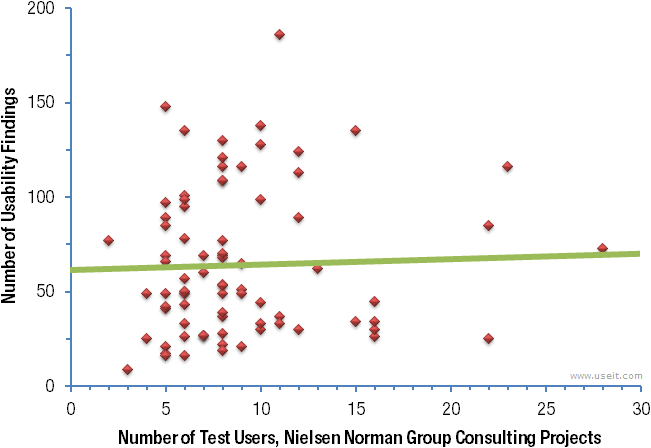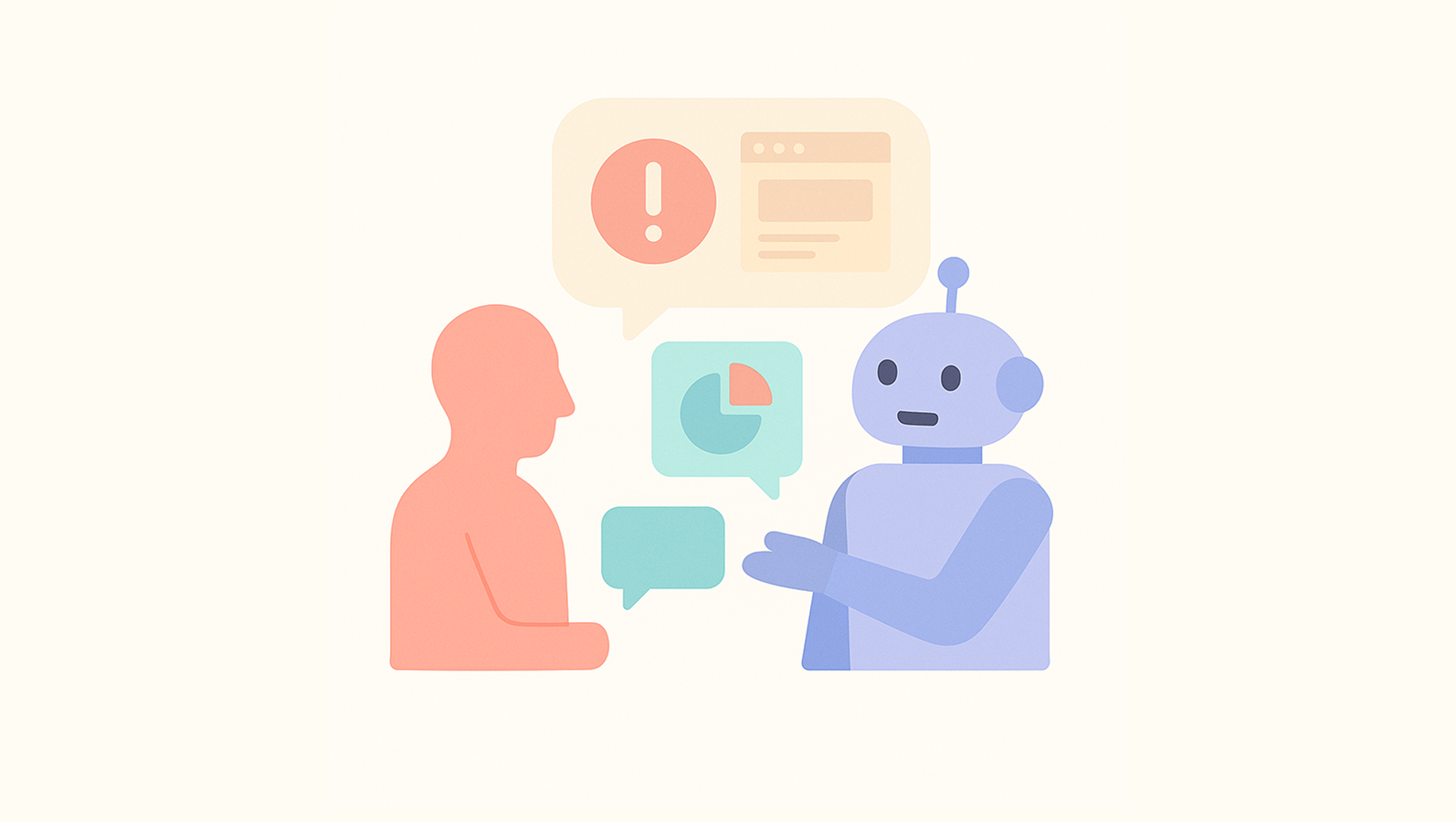When setting up a user study, one of the first choices researchers make is whether to run it in a moderated or unmoderated format, depending on how they want to interact with participants. Both approaches have their strengths, but moderated research has long been one of the most effective ways to speak directly with customers, build rapport, and uncover meaningful insights.
Despite the rise of automation and sophisticated usability testing tools, moderated user testing continues to hold a unique value as it brings a level of empathy and depth that only human conversation can provide—the tone, emotion, and subtle cues that go beyond what software can capture.
There’s an art to moderating: Guiding the conversation, knowing when to steer in, and following unexpected threads. Even with a carefully written discussion guide, conversations often take surprising turns when participants share something revealing, and that’s often where the richest insights emerge.
In this article, we’ll look at why moderated research remains an essential part of UX practice, the different formats it can take, its advantages and limitations, and how to run one effectively.
Why Moderated Research Remains a Cornerstone of UX
Moderated research is the heart and essence of UX research because it lets you understand people in their own words, not just through metrics or clicks. When you’re in the same room (whether physical or virtual) with participants, you can hear the hesitation in their voice, capture the moments of confusion, and notice what they struggle to put into words. Those small cues often reveal more about user experience than any data visualization ever could.
Where structure meets curiosity
What makes moderated studies powerful is their flexibility. As most researchers know, an in-depth interview rarely follows the guide word for word. Side conversations often lead to unexpected insights. A simple prompt like “Tell me about your tech stack” can evolve into a story about frustrations with a specific tool, revealing underlying pain points that would have otherwise stayed hidden.
A skilled moderator adapts in real time, balancing structure with curiosity, knowing what to probe, when to let silence work, and when to close the loop to stay on time. These instincts aren’t learned from textbooks. They develop through experience, reflection, and lots of practice.
Turning observations into empathy
Moderated research is like attending a live concert versus listening to a recording. The song is the same, but being there in person lets you feel the energy, notice the improvisation, and sense the emotion that doesn’t come through speakers.

Moderated sessions help teams build shared understanding. Designers, product managers, and engineers who observe these studies get to see real people using their product often for the first time. Watching a participant struggle with something you designed, or light up when something works, tends to stay with you far longer than reading about it later in a report.
Ultimately, moderated research builds empathy. It gives teams a chance to slow down, listen, and see the people behind the data. That genuine human connection that comes from natural conversation is what keeps moderated research valuable, even as new tools and technologies continue to evolve.
Advantages of Moderated User Testing
Moderated research comes with both strengths and tradeoffs. It’s an incredibly rich method when you want to uncover motivations, emotions, or nuanced usability issues. Nevertheless, it also demands time, coordination and skill as it also involves aligning internally, gathering feedback from stakeholders, and guiding each conversation with intention.
Probing and collecting rich, contextual insights
Live sessions allow moderators to follow threads in real time. When a participant hesitates or gives a short answer, the researcher can immediately ask “Can you tell me more about that?” and uncover the reasoning behind it. Such flexible probing is nearly impossible in static surveys or unmoderated usability tests.
Moderated sessions are dynamic. If something is unclear or contradictory, the researcher can reframe a question, validate assumptions, or dig into unexpected territory. This flexibility makes moderated methods particularly powerful in early discovery or concept testing stages.
Empathy and Team alignment
Seeing and hearing participants in the moment creates a shared emotional experience. Observers can witness frustration, delight, or confusion firsthand, helping teams connect decisions to real human impact.
When stakeholders attend live sessions, they gain an unfiltered view of how users think and behave. That direct exposure often leads to quicker alignment and stronger conviction around design priorities.
Limitations of Moderated Studies
Understanding both sides will help you decide when it's worth investing the extra depth and when a lighter, unmoderated approach might be a better fit.
Time and resource intensive
Each moderated session requires deliberate coordination from recruiting the right participants, and scheduling to facilitating smoothly while keeping observers engaged.
There are also logistical challenges that are hard to control: Scheduling conflicts, connection or technical issues, and the occasional no-show. These hurdles can slow down research cycles if not planned for in advance.
Limited Sample Size
With all the time and resources involved, it makes it difficult for moderated sessions to scale by nature. They reveal depth over breadth, in which findings are rich but not necessarily generalizable to larger populations if not sampled correctly.

In usability studies, sample sizes rarely exceed ten participants, since most major issues surface early. In qualitative research, however, the goal is not about finding statistical significance through quantitative data but qualitative insights that deliver depth. These user insights come not from numbers, but from the richness of what people say.
Moderator Bias and influence
Bias exists in every form of research, but in moderated studies, it often shows up through subtle cues. A moderator’s tone, phrasing, facial expressions, or body language can unintentionally shape how participants respond.
For newer researchers, designers, or product managers who are just starting to moderate, active listening, asking open-ended questions, and resisting the urge to lead can take practice. Participants often want to be polite and share positive feedback, so it’s the moderator’s role to look beyond the surface, listen for hesitation, and uncover the true intent behind their words.
When to Use Moderated Research
In many ways, moderated research is a trade between depth and scalability. When the goal is to collect rich attitudinal data, the extra effort is usually worth it. Below are some common scenarios:
1. Early Discovery or Exploratory Research
When you’re still defining the problem space, moderated interviews let you explore ideas freely. Talking directly with participants helps uncover the whys and hows, user needs, motivations, and barriers.
Common use cases:
- In-depth interviews to understand the jobs-to-be-done (JTBD) of your target audience
- Contextual inquiries to observe how users perform key tasks in their natural environment
- Exploratory interviews to identify pain points and workflow
- Focus groups to explore shared attitudes, perceptions, or reactions
2. Usability Testing Complex or High-Stakes Flows
Some products or experiences are simply too intricate to test without guidance. This often includes closed environments that require credentials, multi-step workflows, or domains where accuracy matters, such as financial tools, healthcare platforms, or enterprise dashboards.
In these situations, the moderator can help participants with setup during the introduction, provide necessary context, and then step back to observe how they move through the flow.
Common use cases:
- Testing closed products that require unique login credentials or account setup
- Scenario-based sessions involving enrollment processes, application forms, or onboarding sequences
3. Evaluating Early-Stage Concepts or Prototypes
When your design is still rough, moderated testing allows you to frame context and observe reactions carefully. Participants can think aloud as they explore, giving you valuable feedback on both concept clarity and usability.
Common use cases:
- Concept testing for new product ideas or value propositions to collect qualitative data
- Prototype testing for feature discoverability and task clarity
4. Sensitive or Emotionally Charged Topics
When research touches on personal experiences, such as health, finances, identity, or relationships, moderated sessions offer a safer, more compassionate space.
A skilled moderator builds trust, pick up on discomfort, and adjust questions sensitively. That level of care is nearly impossible to replicate in an automated or self-guided study.
Common use cases:
- User interviews exploring health challenges, financial stress, or life transitions
- Research on trust and privacy in digital products
High-level Process of Moderated Research
Running a moderated study is part preparation, part facilitation, and part storytelling. The end-to-end process generally follows a few key stages:
1. Research planning and defining objectives
Every good study starts with a clear purpose. You’re not running research just to talk to customers. Even in a less structured interview, it’s important to have clear research goals and learning objectives.
Because moderated studies take more time and coordination, the upfront investment should pay off in meaningful insights. Setting a focused direction helps you get the most value out of every session. This article goes in detail about how to formulate a robust study plan and what components to include.
A few key questions to address early:
- What is the business context, and how will research inform the decision?
- What do you currently know and don't know? Where's the knowledge gap?
- What assumptions do we have, and what do you need to validate or invalidate?
- What key metrics or user behaviors should we take note and observe closely?
Aligning with stakeholders early helps keep the study on track and prevents it from turning into a “catch-all” conversation. Without that alignment, it’s easy for new questions to develop mid-project as you might see a product manager suddenly ask to “just add one more thing” that falls outside the original scope. Clear objectives give you a way to say no gracefully and keep the research focused on what matters.
Beyond defining goals, moderated studies require more orchestration than most other research methods. This includes setting a clear project timeline, leaving enough buffer to recruit and schedule participants, and preparing study materials.
2. Drafting a discussion guide
Alongside your research plan, the discussion guide helps you simulate how the session will flow. Think of it as your compass that sets the direction, outlines the main topics, and provides key transitions to keep the conversation grounded in your goals.
3. Recruit participants
Defining the right participant criteria that best represents your target audience is just as important as the research plan itself. Even the most well-crafted study won’t yield meaningful insights if you’re talking to the wrong customer segment. A strong plan can’t make up for data that isn’t relevant to your goals.
Whether you’re drawing from an internal participant pool or recruiting externally, take time to review screener responses carefully before scheduling sessions. This extra step helps confirm that each participant genuinely fits your target profile and can provide valuable, authentic perspectives.
This comprehensive guide goes over how to prepare your screener questions to find the best fitting participants.
5 Approaches to keep in mind
- Get to know the participants
- Be transparent without giving away too much study information
- Focus on behaviors instead of demographics
- Screener != Survey. Keep it concise.
- Manually review participants one-by-one
Improving the screener flow
- Keep important filtering questions early on
- Save essential open-ended questions for the end
- Use skip logic as needed
Framing questions effectively
- Add red herring (trick) questions
- Avoid leading questions
- Avoid binary yes-no questions
It’s strongly recommended to incorporate open-ended questions in your screener to gauge how genuinely interested participants are in the topic. You can often tell by the length and quality of their responses as someone who cares will take the time to explain their thoughts, while less-engaged participants tend to give one-line answers.
4. Facilitate the sessions
Moderating is about reading the room and creating a space where participants feel comfortable sharing their thoughts. It’s equal parts empathy, adaptability, and psychological safety. Start each session with a warm introduction, thank participants sincerely for their time, and explain how their honest feedback will directly shape the product’s direction.
Clarify what to expect in the study, then ease naturally into your main questions or specific tasks. You can explore more on facilitation techniques in our separate article on interview best practices. Below is a common blurb that is frequently used:
"Please remember there are no right or wrong answers. We're testing the product, not you."
Always close the session by thanking participants again and making sure gratuity is promptly handled. Small gestures of respect leave a lasting impression and encourage future participation.
5. Debrief and synthesize
After each session, take a few minutes to capture your immediate impressions before the context fades. It helps to briefly summarize the session and describe the participant in a way that captures their personality or mindset. For example, you might note that a participant was a bargain hunter who shared clever tips for finding the best deals while shopping.
Synthesizing insights means looking for recurring patterns, surprises, and quotes that represent key moments. For each theme, include supporting evidence such as participant quotes or specific behaviors observed during the session.
6. Share research deliverables
A moderated study is not finished once the report is written. There are many ways to bring your findings to life beyond a written summary. You can devise UX artifacts such as journey maps, persona foundations, or video highlight reels to help the team visualize the insights.
When sharing results, focus on telling a story rather than presenting a list of recommendations. A clear narrative helps others understand not just what you found, but why it matters.
Designing with Empathy
Running a moderated study takes more coordination than unmoderated user testing, but it yields richer actionable insights. These conversations strengthen your understanding of customers and help ground the design process in customer-driven evidence rather than assumptions.
We have explored why moderated research remains valuable, its key advantages, and the main steps involved in the process. Even as user research continues to evolve with AI and remote tools, human conversation remains irreplaceable. Crafting meaningful design always begins with talking, listening, and deeper understanding your customers.
FAQs
Moderated research involves a live facilitator who guides participants through tasks or questions in real time, allowing for deeper probing and clarification. Unmoderated research is completed independently by participants without a moderator present in a remote testing environment, making it faster and more scalable and cost-effective but less flexible for exploring detailed insights.
Most moderated usability studies involve five to ten users. At this range, major usability issues usually surface, and sessions remain manageable to analyze. The goal of moderated research is depth, not statistical significance, so smaller, well-selected samples are often more effective.
Choose moderated research when you need to explore complex workflows, emotional reactions, or in-depth reasoning behind users' actions. It’s best for early discovery, concept testing, and sensitive topics where real-time conversation and empathy play an important role.
There is no one method that's better than the other. Both moderated and unmoderated usability testing methods are valuable in user research.
A good moderator is empathetic, curious, and skilled at listening without leading. They create a comfortable environment where users can speak freely, know when to probe deeper, and balance the conversation to stay on track while allowing natural dialogue to unfold.










